For centuries, emperors, as well as aristocrats have revered caviar, the delicate and salty delicacy, as a symbol of luxury and refinement, gracing their tables. Its unique flavor, a harmonious blend of brininess, umami, and a hint of sweetness, has captivated discerning palates worldwide. But what makes caviar, how do people produce it, and why do they prize it so much? Let’s embark on a journey through the world of caviar, exploring its origins, production, as well as exquisite taste.
Diving into the genesis of caviar, one discovers a true culinary gem nurtured by the Sturgeon’s life cycle. Caviar, often referred to as the “pearls of the sea,” emerges from the salted roe, or eggs, of the sturgeon. It is a remarkable fish species dwelling in both freshwater and marine environments across the globe. However, it is the wild sturgeon, notably those gracefully navigating the waters of the Caspian Sea, that give rise to the most esteemed, as well as renowned caviar. This fish single-handedly created a tradition dating back millennia.
The alchemy of transforming sturgeon eggs into this delicacy is a testament to human craftsmanship. It is marked by delicacy and labor-intensive dedication. Harvesting the precious roe involves a careful capture of sturgeon. The process of obtaining the eggs is very delicate. Skilled hands remove them, usually opting for a manual approach. It minimizes any potential damage to these precious pearls of flavor.
Once liberated from the sturgeon, the eggs go on a journey of refinement. A gentle cleansing follows, where the eggs are washed to ensure purity while preserving their inherent freshness. It is in the next stage that caviar unveils its true identity—salt, the catalyst that elevates these orbs to the pinnacle of taste. Each egg is delicately seasoned, adding saltiness, brininess, and a whisper of sweetness that defines caviar’s unique profile.
Having undergone this transformation, the caviar is then tenderly cradled in packaging, preserving its delicate essence until it graces the palates of discerning connoisseurs. This process, from capture to packaging, is not merely a culinary choreography but an art, one that safeguards the integrity of the sturgeon’s eggs and bestows upon the world a taste that transcends time.
Thus, the journey of caviar from the Sturgeon’s eggs is a symphony of craftsmanship, where the interplay of nature and human hands produces a culinary masterpiece revered across cultures and epochs.
Caviar is a culinary symphony of textures, as well as flavors. Its delicate, round eggs melt upon the tongue, releasing a burst of salty, briny, and umami notes. The texture is smooth and velvety, with a satisfying pop as the eggs burst.
The flavor of caviar varies depending on the species of sturgeon, the age of the eggs, and the salting process. The most prized caviar is Beluga, produced from the largest sturgeon species, known for its rich, buttery flavor. Osetra caviar, from a smaller sturgeon species, offers a more delicate flavor with a hint of nuttiness. Sevruga caviar, from a smaller still sturgeon, is known for its saltiness and crisp texture.
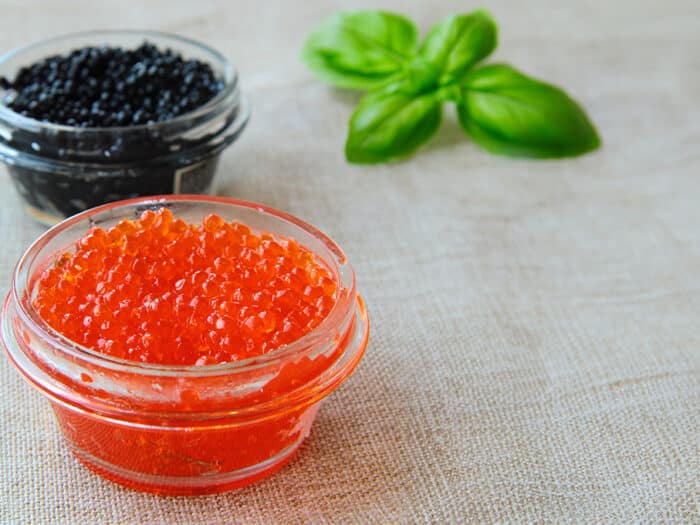
Traditionally, people serve caviar chilled and accompany it with simple elements that enhance its flavor without overpowering it. Toast points, blinis, and small spoons are common serving vessels, while crème fraîche, sour cream, or chopped egg yolk are often used as garnishes.
Fine wines, particularly those from the Champagne region of France, complement caviar’s rich flavors perfectly. Champagne’s bubbles provide a refreshing contrast to the caviar’s richness, while its acidity balances the saltiness. Other suitable pairings include dry whites, rosés, as well as sparkling rosés.
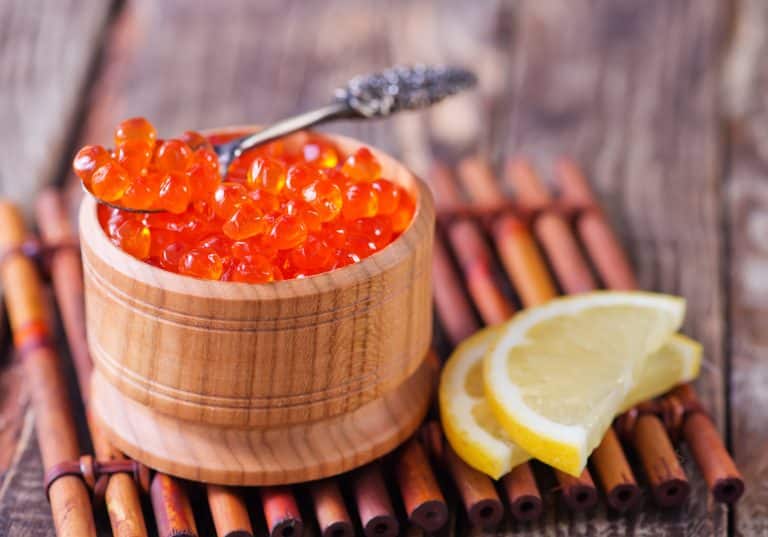
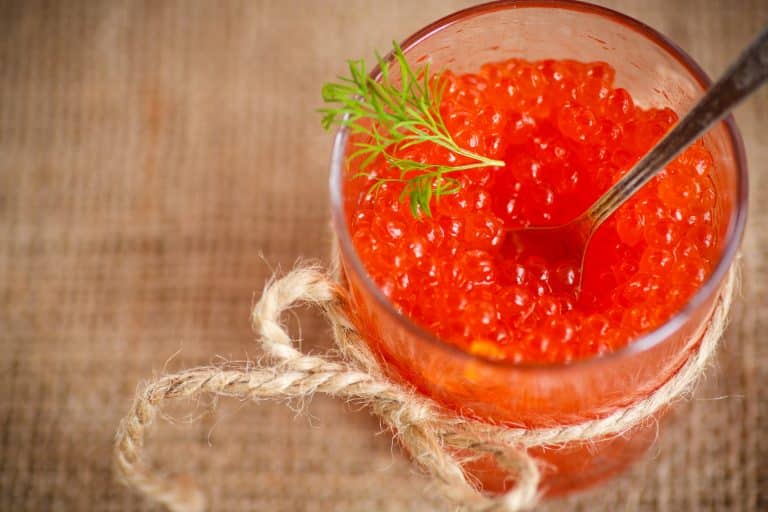
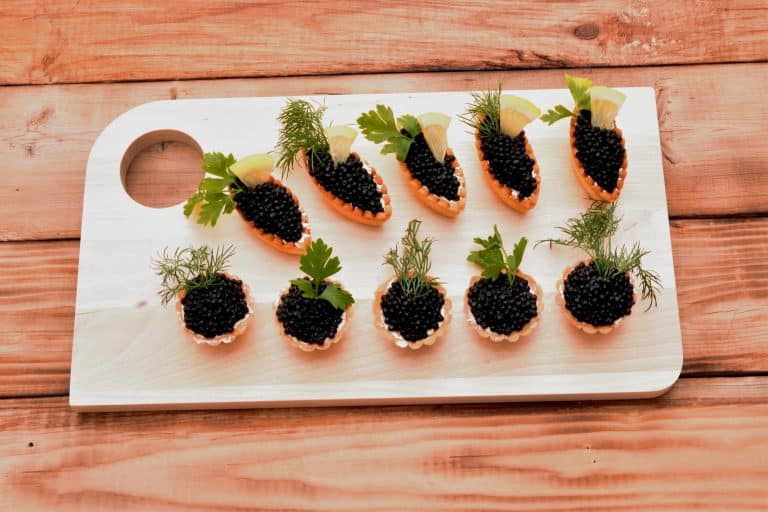
The richness of caviar extends beyond the boundaries of mere indulgence, weaving a narrative of culinary excellence. Far more than a delicacy, caviar stands as a testament to centuries of tradition. It is an eloquent expression of the deep-rooted passion that has nurtured its journey through the annals of gastronomic history.
Born in the cradle of the Caspian Sea, caviar’s roots trace back to a humble genesis. The bounties of nature met the ingenuity of communities dwelling along the shores. The art of extracting the sturgeon’s eggs from the depths of the water and transforming them into a culinary treasure became an art form. It became a tradition passed down through generations. It wasn’t just a gastronomic pursuit; it was an embodiment of respect for nature’s gifts. Some may call it an intricate dance of tradition and reverence.
As the world turned and civilizations evolved, so did the allure of caviar. What began as a local secret in the Caspian Sea region soon became a global sensation, captivating palates on every continent. The journey of caviar mirrored the expansion of cultural horizons, transcending borders, as well as oceans to find its place on the tables of emperors, aristocrats, and discerning epicureans worldwide.
Caviar’s ascendancy to the status of a symbol of luxury, as well as refinement is a testament to its unparalleled allure. Its subtle, complex flavors became a gastronomic language spoken by chefs around the world. The language whispered tales of the sea, of craftsmanship, and of a legacy steeped in excellence. The world came to recognize caviar not just as a dish but as a pinnacle of culinary achievement that elevated dining experiences.
Chefs, inspired by the taste of these sturgeon’s eggs, incorporated caviar into their creations. The legacy of caviar became an inspiration. It became a touchstone for chefs aspiring to elevate their craft and for diners seeking the epitome of culinary indulgence.
In essence, caviar is a living legacy, a story told through the nuanced flavors of its delicate orbs and the passion that has shaped its journey. It continues to enchant, not just as a culinary delight but as a reminder of the enduring connection between tradition, craftsmanship, and the universal pursuit of excellence in the world of fine dining.
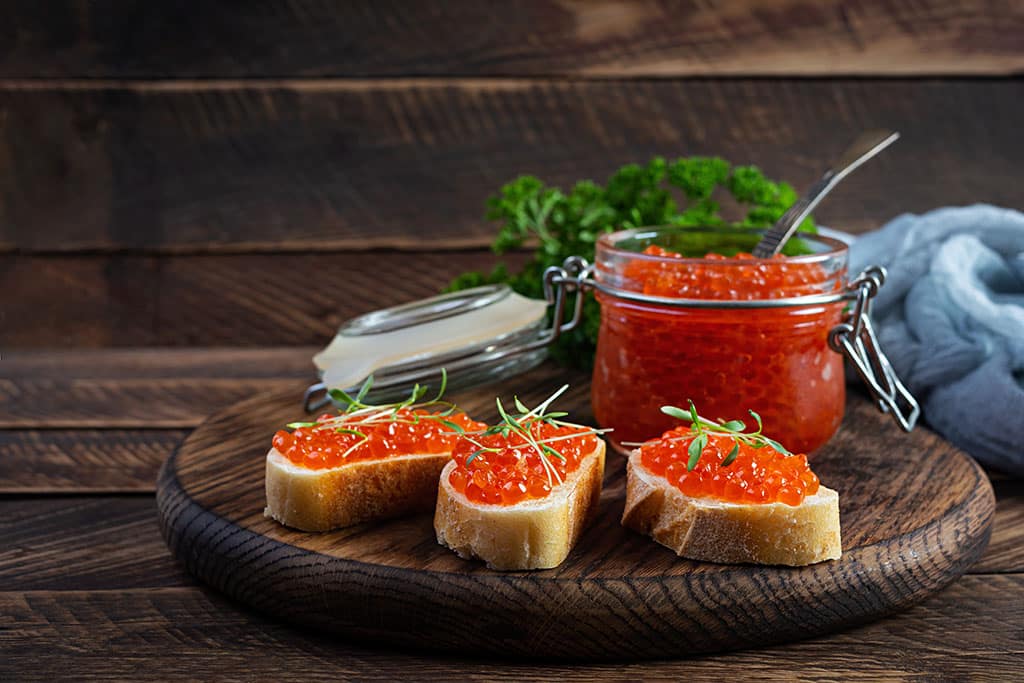
Copyright © 2024 by EuroFoodExpress.com. All rights reserved.